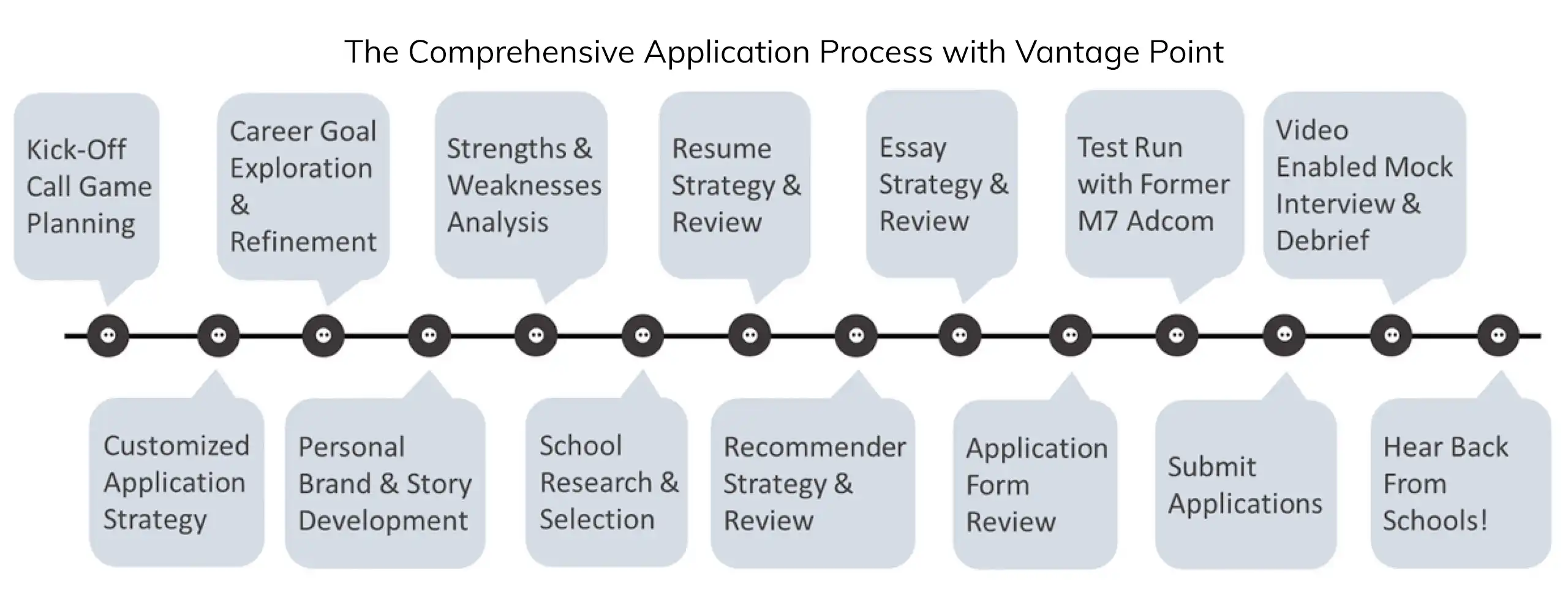10 Dos and Don’ts for Getting off the MBA Waitlist
Updated 12.14.20
So, you’re on the waitlist for your dream school? It wasn’t the decision you were hoping for, but the good news is that you’re still in the running. Being on the waitlist means that the adcom really liked you and thought you would be a great fit for their program but, for any number of reasons, wasn’t able to extend you an offer of admission – yet.
The “yet” is what I’m writing about today. What can you do to get out of waitlist limbo? Inspired by our experience with clients over the years, here is a list of 10 DOs and DON’Ts for actively managing your waitlist status. Hint: don’t just wait!
DO
1. Carefully read the waitlist instructions.
And follow them. This may seem like a given but I’m surprised how often this step is overlooked. The waitlist instructions provide a lot of useful information, including how to opt into the waitlist (if needed), what kinds of updates the school accepts, contact information for your waitlist manager, etc.
This information can differ from school to school so, if you’re on more than one waitlist, it’s important to understand what levers are at your disposal for each. Then you can start planning out your waitlist strategy.
2. Honestly assess your application and identify any opportunities for improvement.
The key to a successful waitlist strategy is ensuring it addresses the reasons the school chose to waitlist versus admit you. In our experience, the most common of these include: a lower than average test score or GPA, light extracurriculars, too little or too much work experience, unclear or inauthentic career goals, and undifferentiated experience (especially if you come from an overrepresented pool like banking or consulting). Ultimately, the opportunity areas differ for each person so it’s important to take a critical eye to your application (and perhaps get a second opinion) to determine where and how you can improve.
3. Be proactive.
I’ll say it again – the key to a successful waitlist strategy is action. If your GMAT score was on the low side, consider a retake. If your GPA was below average, consider enrolling in an online class (think statistics, accounting, finance, etc.) from an accredited institution to provide further evidence of your academic aptitude. Bulking up your extracurriculars can be challenging given the state of the world and shorter timeline you’re dealing with, but here are a few ideas on how to add something with impact and do it quickly.
Once you’ve done what you can, you need to share it with the adcom. Within the constraints of their waitlist instructions of course, the best way to do this is by submitting an update letter(s). The key to a successful update letter is to provide new information, not repeat material already included in your application. In addition to the things noted above, new information can include a promotion at work, additional reasons for fit with the program, or how you’ll contribute to the school.
4. Think outside the box.
So far, we’ve explored the “tried and true” ways to actively manage your waitlist status. However, being on the waitlist is also a great opportunity to get a little creative (so long as it doesn’t violate the school’s waitlist instructions).
For instance, more schools are now accepting video letters (i.e. Chicago Booth), so using that medium to provide meaningful updates while showcasing your personality and “putting a face to your name” could be a great option. Another idea is to have a current student or alum who knows you well submit a letter of support that details why you’re a good fit for their school. In general, if you have a unique skill or talent, don’t be shy about leveraging it to provide a memorable waitlist update – just make sure it’s appropriate.
5. Explicitly state that you’ll enroll if admitted.
The school wants reassurance that you will enroll if admitted off the waitlist. Remember that not everyone on the waitlist is as committed to the school as you are. So, in everything you do, let the school know that you remain committed to their program and that it’s your #1 choice (if that’s the case). No need to beat around the bush with this one – just say it directly.
DON’T
1. Freak out, panic, or lose hope.
I know this is easier said than done, but now is not the time to despair. Your efforts (and emotions) are better spent on taking constructive action. Stay confident (if you’re on the waitlist, it means that you have what it takes) and try not to compare yourself with others. Put your head down and focus on #1-5 above. We’ve seen applicants get off the waitlist as late as August so it’s not over until you get an official rejection from the school.
2. Try to “hack” the waitlist process.
As admissions consultants, we get this a lot. “What are my chances of getting off the waitlist?” “What could I do that would automatically get me off the waitlist?” Unfortunately, as with all things MBA admissions, the waitlist process is not formulaic and there’s no magic bullet. Trying to predict your chances of getting off the waitlist may seem like a good way to get some level of certainty during the wait, but it’s really not productive or helpful. Again, your efforts will be best spent on taking actions that strengthen your profile.
3. Submit new essays with every update.
As mentioned above, the purpose of an update letter is to provide new, relevant information that will strengthen your profile and help the adcom in their final decision. The adcom receives a lot of communication and you don’t want to make their job any harder by submitting multi-page letters and/or information that was already included in your application. Your update letter(s) should be factual, direct, and succinct. Think of them more as press releases than essays.
4. Harass the adcom or your waitlist manager.
I know we spent the entire first half of this guide outlining all the ways to be an active ‘waitlistee’, but you also want to be thoughtful in every interaction and update you provide. You want to be proactive without being aggressive. Remember that the adcom is evaluating your interpersonal skills and determining whether you would represent the school well in front of recruiters. The schools have a reputation to uphold, after all. Make sure that your behavior is desirable.
5. Get complacent.
After all the effort you put into your resume, essays, and interview prep, you may be reluctant to load up your to-do list with more application “stuff”. However, now is not the time to get lazy or give up. A short-term investment in re-taking the GMAT (ugh!), crafting an update letter, etc. has the potential for long-term payoff. Get going!
On the waitlist and wondering what your next steps should be? We’re happy to help! Sign up for a free consultation today.
I partner with applicants to elite MBA programs and associated dual-degree programs to put their absolute best foot forward in the admissions process. With my support, applicants communicate their unique stories in a highly intriguing manner to admissions officers. Clients quickly discover my passion for mentoring talent to reach maximum potential.




Pingback: MBA Waitlist Action Plan | Vantage Point MBA
December 7, 2024 4:04 pm